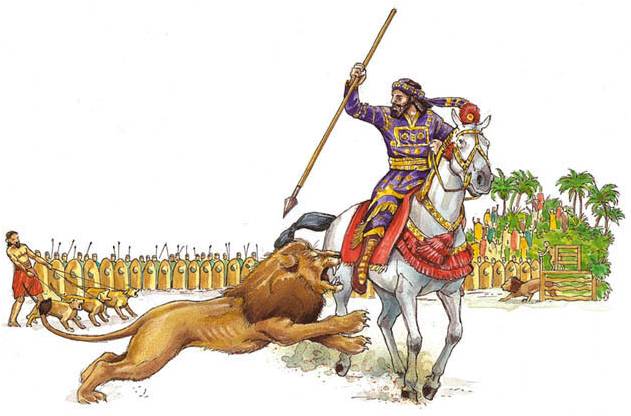by
Damien F. Mackey
The king answered and said to the Chaldeans, ‘The word from me is firm: if you do not make known to me the dream and its interpretation, you shall be torn limb from limb,
and your houses shall be laid in ruins’.
Daniel 2:5
Did the Chaldean king have at his disposal, like the god Dionysus, a devoted group of frenzied maenads (females), whose specialty was tearing men limb from limb?
… [the maenads] were also known for being most cruel against the enemies of the god they worshipped. For being possessed by the unusual strength that came from bacchic frenzy, they could tear apart whoever came in their way, as it happened to King Pentheus 1 of Thebes, who was torn limb by limb by them. And they could rout armies, for they could not be wounded when touched by enemy weapons, but they inflicted casualties on their opponents by hurling the thyrsoi at them. It is also said that they could carry heavy objects on their shoulders without holding them with bounds, and that they carried fire on their locks without being burned. So, possessing such amazing qualities, they could fall upon towns, turning everything upside down, for no one could resist them. And yet it is told that the MAENADS were imprisoned by King Lycurgus 1 (known for being fond of cutting people to pieces, and for decorating his gates with their extremities), the first to oppose Dionysus 2, some say in Thrace.
The key to this, I think, must be “the lions’ den” about which one reads in Daniel 67-27, and, again, in the tale of Bel and the Dragon, which two accounts relate to the one incident according to my article:
Was Daniel Twice in the Lions’ Den?
This incident occurred just a few years after the death of Nebuchednezzar, the king being, now, Darius the Mede (Daniel 6), who is named Cyrus in Bel and the Dragon.
The Medo-Persian king’s opponents were indeed torn limb from limb – as lions are wont to do (Daniel 6:24; cf. Bel, v. 42): “And before they reached the floor of the den, the lions overpowered them and crushed all their bones”.
Ashurbanipal, rather than Nebuchednezzar II, would be considered to have been the great hunter of lions:
From the great frieze in the British Museum, this detail depicts the royal lion hunt of the Assyrian king Ashurbanipal. It is part of the palace at Nineveh and dates to about 645-635 BC. Captured lions, which had been a menace to domestic animals as well as to men, were released one-by-one from cages into an arena surrounded by dogs and soldiers with tall shields to keep any from escaping. They then were shot by the king from his chariot.
But that does not matter, given my identification of this Ashurbanipal with Nebuchednezzar (= Nabonidus):
Ashurbanipal and Nabonidus
Having these alter egos for king Nebuchednezzar II serves a most useful purpose.
In relation to the biblical “Nebuchednezzar”, as a king of dreams, it helps to have the very dream-obsessed Nabonidus as an alter ego.
It helps, too, to have Nabonidus’s phase of madness, and his absence from Babylon.
Ashurbanipal, too, helps in various ways.
He, we have found, had a lions’ den.
He also used a burning fiery furnace – he placed his own brother therein. And Ashurbanipal’s Egyptian campaigns are the missing link for those attributed to Nebuchednezzar in the OT, but so poorly attested in the historical records.

No comments:
Post a Comment